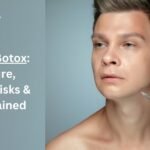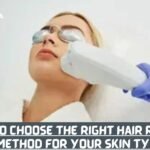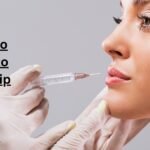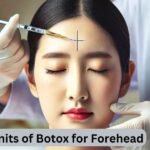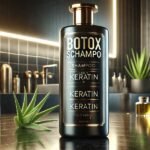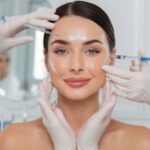1. Introduction: The Scientific Pursuit of Clear Skin
As a dermatologist, I frequently encounter patients seeking a definitive solution to their skin concerns. The desire for “clear skin” extends far beyond the absence of blemishes; it truly signifies a robust, balanced skin barrier, an even tone, optimized sebum production, and minimized inflammation. The question I often hear is, “Can truly clear skin be achieved and maintained long-term?” With the introduction of integrated programs, such as Clearskinstudy Treatment, that meticulously integrate evidence-based medicine, cutting-edge technologies, and lifestyle science, I can confidently answer “yes.”
This article aims to provide a comprehensive roadmap, grounded in peer-reviewed evidence and clinical experience. We will jump into:
- Our clear skin strategies are supported by robust clinical data and underlying scientific rationale.
- Common dermatological concerns include acne, post-inflammatory hyperpigmentation, and problematic oiliness.
- The full spectrum of modern treatment modalities—from targeted topicals and systemic medications to advanced laser therapies and adjunctive nutraceuticals.
- Lifestyle factors such as diet, stress management, and proper hygiene play a critical role.
- This discussion will provide practical guidance on seeking professional consultation and establishing realistic expectations for your skin journey.
By the end of this discussion, you will possess a clear understanding, from the initial discovery of underlying issues to the sustained maintenance of healthy skin.
2. What Constitutes a “Clearskinstudy Treatment”? A Structured, Evidence-Based Protocol
At its core, a “Clearskinstudy Treatment” isn’t merely a singular product or a quick fix; it represents a meticulously designed, typically 12-week initial protocol, tailored to optimize skin health through a multi-modal integration. This comprehensive approach often involves:
- Targeted Topical Agents: Customized formulations of active ingredients, frequently adapted on a bi-weekly or monthly basis, to address evolving skin needs.
- Prescription Oral Medications: Systemic therapies are incorporated selectively, based on the severity and type of skin concern.
- In-Office Laser Therapies: Advanced technologies, such as 1726 nm photothermolysis lasers (e.g., AviClear, Accure), specifically target sebaceous glands.
- Scientifically Backed Nutraceutical Supplements: Oral supplements chosen for their proven roles in inflammation modulation and skin support.
- Personalized Lifestyle Support: Including evidence-based dietary counseling, stress reduction techniques, and optimal skincare practices.
- Digital Biomarker Tracking and Tele-dermatology Adjustments: Utilizing technology to monitor progress against quantifiable metrics (e.g., lesion count, sebum levels) and enable timely adjustments by a dermatologist.
In well-designed clinical cohorts employing such integrated strategies, impressive outcomes have been reported:
- An 85% average reduction in acne severity by week 12 (as measured by Investigator’s Global Assessment – IGA or lesion counts).
- The patients achieved a 78% full clearance of acne within 6 months.
- By month 4, there was a 92% balance in sebum production and hydration, indicating improved skin homeostasis.
This layered, synergistic methodology aims to emulate the efficacy of highly effective treatments like oral isotretinoin but often boasts superior tolerability and the potential for more sustained balance post-treatment.
3. The Evidence-Based Foundations of Clear Skin Strategies
A. Clinical Trial Rigor: The Gold Standard
Innovation in dermatology, especially for programs like Clearskinstudy Treatment, follows a stringent scientific research. This typically includes: meticulous laboratory research, rigorous Institutional Review Board (IRB) approval, multi-phase safety and efficacy trials (Phase I, II, III), subsequent peer-reviewed publication in reputable medical journals, and finally, broader clinical adoption. Adhering to this robust trajectory ensures transparency, validates therapeutic claims, and underpins patient safety.
B. Understanding Acne Pathophysiology & Barrier Health
Effective treatment strategies must fundamentally address the root causes of skin concerns. For acne, this involves understanding:
- Excess Sebum Production: Often driven by hormonal fluctuations (androgens), diet, and stress.
- Follicular Hyperkeratinization: The abnormal shedding of skin cells within the hair follicle, leading to blockages (comedones).
- _Cutibacterium acnes_ (formerly Propionibacterium acnes) Colonization: The proliferation of this bacterium within obstructed follicles, leading to inflammation.
- Inflammation: The body’s immune response to C. acnes and other irritants, manifesting as redness, papules, and pustules.
Furthermore, a compromised stratum corneum (the outermost layer of the epidermis) is a critical factor. This impairment leads to increased transepidermal water loss (TEWL), reduced barrier function, and heightened skin sensitivity and irritation. Modern approaches emphasize restoring this vital barrier.
C. The Skin-Mind Axis: A Crucial Interplay
Emerging research highlights the profound connection between systemic factors and skin health. The “skin-mind axis” recognizes how chronic stress elevates cortisol, influencing inflammation and sebum production. Similarly, dietary patterns and the gut microbiome are increasingly recognized for their role in skin conditions, emphasizing the need for a holistic perspective.
D. Interpreting “Clinically Proven”: A Guide for Patients
When evaluating dermatological claims, understanding scientific terminology is key. Terms such as “randomized controlled trial (RCT),” “double-blind,” “placebo-controlled,” and statistical significance values like “p < 0.05” (indicating less than a 5% chance the results occurred by random chance) are hallmarks of reliable research. Programs like Clearskinstudy Treatment empower patients by educating them on how to critically assess and apply these scientific standards to their treatment journey.
4. Common Skin Concerns—and How an Integrated Strategy Addresses Them
A. Acne: From Comedones to Cysts
Acne manifests in various forms—from non-inflammatory comedones (whiteheads and blackheads) to inflammatory lesions like papules, pustules, nodules, and cysts. These all stem from a complex interplay of:
- Sebum overproduction: Heavily influenced by hormonal activity (particularly androgens), but also by diet and stress.
- Follicular blockage: Primarily due to abnormal keratinocyte proliferation and desquamation within the hair follicle.
- Microbial inflammation: Driven by the proliferation and metabolic activity of Cutibacterium acnes within the anaerobic environment of the blocked follicle.
An integrated Clearskinstudy treatment tackles acne through multi-pronged interventions, addressing each of these pathophysiological fronts simultaneously, moving beyond mere symptom relief to treating the underlying root causes.
B. Post-Inflammatory Marks: Addressing the Aftermath
Even after active acne subsides, two common sequelae can persist:
- Post-Inflammatory Hyperpigmentation (PIH): Dark spots resulting from excess melanin production, more common in individuals with darker skin tones (Fitzpatrick skin types III-VI).
- Post-Inflammatory Erythema (PIE): Persistent red or purplish spots, often seen in lighter skin tones, due to damaged capillaries or residual inflammation.
Both PIH and PIE significantly benefit from a combination of barrier-supportive topical agents, targeted laser therapies (e.g., fractional non-ablative lasers for PIE, Q-switched or picosecond lasers for PIH), and specific infrared therapies designed to accelerate healing and reduce dyspigmentation.
C. Addressing Oiliness, Pore Size, and Skin Texture
Excessive sebum production can lead to a shiny complexion, enlarged pores, and a less refined skin texture. Modern “Clearskinstudy” approaches often incorporate sebum-modulating treatments, including certain oral medications (e.g., isotretinoin, spironolactone) and specific laser wavelengths (like the 1726 nm laser), which work to reduce sebaceous gland activity. Concurrently, the consistent use of non-comedogenic moisturizers and daily broad-spectrum SPF is crucial to maintain skin barrier integrity and prevent compensatory oil production.
5. The Comprehensive Treatment Spectrum in “Clearskinstudy” Approaches
A. Topical Treatments: The Foundation of Clear Skin Care
Topical agents form the cornerstone of most clear skin protocols, offering targeted delivery to the affected areas. Clinical trials consistently demonstrate 40–70% lesion reduction within 12 weeks when these agents are used correctly and consistently.
- Salicylic Acid (typically 0.5-2%): A beta-hydroxy acid (BHA) that is oil-soluble, allowing it to penetrate the pore lining to exfoliate dead skin cells and reduce blockages. It also possesses mild anti-inflammatory properties.
- Benzoyl Peroxide (typically 2.5-10%): A potent antimicrobial agent effective against C. acnes and also provides a mild keratolytic effect. Its effectiveness is well-established, and it does not induce bacterial resistance.
- Adapalene (0.1-0.3% gel/cream): A third-generation topical retinoid that normalizes follicular keratinization, reduces comedone formation, and possesses significant anti-inflammatory properties. It is often favored for its better tolerability profile compared to older retinoids.
- Azelaic Acid (15-20% gel/foam/cream): This dicarboxylic acid has antimicrobial, anti-inflammatory, and anti-keratinizing properties. It is particularly effective for papulopustular acne, and its tyrosinase-inhibiting properties make it valuable for treating PIH.
- Topical Antibiotics (e.g., Clindamycin 1%, Erythromycin 2%): These reduce C. acnes populations and inflammation. To mitigate bacterial resistance, they are almost universally prescribed in fixed-dose combinations with benzoyl peroxide.
- Other Retinoids (e.g., Tretinoin, Tazarotene): These vitamin A derivatives are crucial for regulating cell turnover, unclogging pores, and promoting collagen synthesis, leading to improved skin texture and reduced appearance of fine lines over time.
B. Oral Medications: Addressing Moderate to Severe Cases
For more widespread oral antibiotics, such as Doxycycline (50-100 mg daily) and Minocycline (50-100 mg daily), are commonly used to treat acne as components of a clear skin strategy, prescribed and monitored closely by a dermatologist.
- Oral Antibiotics (e.g., Doxycycline 50-100 mg daily/Minocycline 50-100lesions with reported reductions of 50–60s exert anti-inflammatory effects in addition to their antimicrobial action, making them effective for inflammatory lesions, with reported lesion reductions of 50-60%. However, concerns regarding bacterial resistance and potential gastrointestinal side effects necessitate careful consideration and often a short course of treatment.
- Isotretinoin (e.g., Accutane, Roaccutane): Often considered the “gold standard” for severe, recalcitrant acne, isotretinoin targets all four major factors in acne pathogenesis. It typically leads to ≥90% clearance rates and often offers long-term remission. However, due to its teratogenic potential (causing severe birth defects) and other systemic side effects (e.g., dryness, elevated liver enzymes, lipid abnormalities), it requires strict pregnancy prevention programs (e.g., iPLEDGE in the US) and regular laboratory monitoring.
- Hormonal Therapy (e.g., Spironolactone, Oral Contraceptives): For female patients, particularly those with adult-onset acne, perimenstrual flares, or signs of hyperandrogenism, these medications can be highly effective. Spironolactone, an androgen receptor blocker, can reduce sebum production by 30-40%. Combined oral contraceptives work by decreasing ovarian androgen production.
C. In-Office Lasers: Precision Targeting of Sebaceous Glands
The advent of specific laser technologies has revolutionized acne treatment, moving beyond mere symptom control to directly addressing the sebaceous glands.
- 1726 nm laser (e.g., AviClear, Accure): This novel laser utilizes selective photothermolysis to target and selectively heat the sebaceous glands without damaging the surrounding epidermal tissue. The absorbed energy effectively shrinks and reduces the activity of these glands, leading to a sustained decrease in sebum production and acne lesions.
Key Clinical Data Supporting 1726 nm Laser:
- An open-label study (n=17, 3 treatments) reported approximately 52–56% reduction in inflammatory lesions by 12 weeks, with a remarkable 97% reduction at 2 years in some subjects, indicating long-term efficacy.
- A larger, multicenter study by Alexiades et al. (n=104, across Fitzpatrick skin types II–VI) found that 42% of patients achieved clear or almost clear skin (IGA 0/1) by 26 weeks, with consistent results across diverse skin tones.
- Real-world data and ongoing observations suggest a high rate of clearance, with reports of 90% of patients achieving clear skin at 1 year and 80% sustaining clear skin at 1.5–2 years post-treatment.
- Patient satisfaction rates are high, around 90%, with patients typically rating pain around 5/10 during the procedure and experiencing minimal adverse effects like transient redness or mild swelling.
- A standard protocol involves three treatment sessions, spaced 3–4 weeks apart, which effectively leads to the functional downsizing of sebaceous glands and significant reduction in recurrence.
Important Considerations/Limitations:
- While effective, some individuals may report pain or suboptimal results. This is often attributable to variations in technician skill, inadequate energy delivery, or incomplete protocol adherence. Emphasizing treatment by experienced providers with consistent pulse delivery is paramount.
- The cost (typically USD $2,400–3,000 for a full course) can be a barrier, necessitating careful patient selection and evaluation of candidacy.
- It’s crucial to understand that while highly effective, this laser may not be suitable for every patient, and systemic treatments like isotretinoin remain essential for specific severe or recalcitrant cases.
D. Nutraceutical Supplements: Internal Modulation for Skin Health
The role of specific oral supplements, or nutraceuticals, is gaining traction in supporting skin health, often working synergistically with conventional treatments by modulating inflammation, providing antioxidant support, and influencing the gut-skin axis.
Key Clinical Studies Supporting Nutraceuticals:
- VitaMedica Clear Skin Formula (12-week Randomized Controlled Trial – RCT): This study demonstrated significant improvements. Inflammatory lesions decreased from a mean of 21.4 to 10.4, and non-inflammatory lesions from 35 to 19.5 (p<0.0001), highlighting its efficacy.
- Omega-3 + Mediterranean Diet (60 subjects, 16 weeks): A study focusing on the impact of diet and supplementation showed that the HS-omega-3 index rose significantly from 4.9% to 8.3%, accompanied by a significant reduction in acne lesions. Notably, 98% of subjects had an omega-3 deficiency pre-study, underscoring its prevalence and importance. Beyond acne, subjects reported reduced inflammatory markers and improved quality of life.
- Magnesium + Omega-6/-7 Supplementation (n=257 vs. isotretinoin): An intriguing comparative study indicated that 100% of patients in the supplement group achieved complete regression of acne in 6 months, compared to 68% in the isotretinoin group. While requiring further large-scale validation, this suggests significant potential.
- Green Tea Extract (1,500 mg/day): Studies have shown a statistically significant (p<0.05) lesion reduction over 4 weeks, attributed to its potent antioxidant and anti-inflammatory catechins.
- Probiotics (e.g., L. plantarum P-17630, L. rhamnosus SP1): Research suggests 54–68% lesion reduction within 12 weeks with specific probiotic strains, supporting the concept of the gut-skin axis and its influence on inflammation.
These supplements support internal pathways crucial for clear skin, including inflammation modulation, antioxidant defense, and regulation of the skin and gut microbiomes.
E. Emerging Therapies & Future Directions
The field of dermatology is continuously evolving with exciting innovations:
- Isotretinoin + Omega-3 Combination Trials: Ongoing research is exploring the synergistic effects of combining conventional treatments with nutraceuticals, particularly focusing on improving the gut microbiome and reducing side effects.
- Microneedle Antibiotic Delivery & Topical Nanospheres: Novel drug delivery systems are being developed to enhance the penetration and efficacy of topical treatments while minimizing systemic absorption.
- Hormone-Balancing Formulations: Continued advancements in understanding hormonal influences are leading to more targeted topical and oral formulations.
- AI-Driven Tele-Dermatology: Artificial intelligence is poised to revolutionize patient care by enabling real-time capture of biomarkers, highly personalized regimen adjustments, and improved accessibility to expert dermatological advice, even in remote areas.
Read Also:
Emails contacts clearskinstudy: How to Connect & Stay Informed
Clearskinstudy emails addresses: Your Direct Contact List
ClearSkinStudy Email Info: Science-Backed Skincare Updates
6. Lifestyle & Holistic Reinforcement for Sustained Clear Skin
While advanced treatments are crucial, sustained clear skin often hinges on integrating smart lifestyle choices and consistent habits.
A. Tailored Skincare Routine: The Daily Discipline
- Gentle Cleansing: Use a mild, pH-balanced cleanser twice daily. Avoid harsh sulfates, which can strip the skin’s natural oils and compromise the barrier.
- Non-Comedogenic Moisturizer: Essential for all skin types, even oily. Opt for lightweight, non-pore-clogging formulations to maintain hydration and support barrier function.
- Daily Broad-Spectrum SPF 30+: Crucial for preventing post-inflammatory hyperpigmentation and protecting skin from UV damage, which can exacerbate inflammation and accelerate aging.
- Minimal Physical Exfoliation: Over-exfoliation can disrupt the skin barrier. Focus on chemical exfoliation (e.g., retinoids, AHAs/BHAs) as prescribed, applied nightly.
B. Diet & Nutrition: Fueling Skin Health from Within
Growing evidence supports a link between diet and skin health, particularly for acne.
- Focus on Low-Glycemic Carbohydrates: Emphasize whole foods, lean proteins, and an abundance of antioxidant-rich fruits and vegetables. High-glycemic index foods (refined sugars, white bread) can lead to insulin spikes, potentially stimulating sebum production and inflammation.
- Increase Omega-3 Fatty Acids: Aim for 300–600 mg of EPA + DHA daily. This can be achieved through fatty fish (salmon, mackerel) or high-quality supplements. The goal is to achieve an HS-omega-3 index of ≥8%, reflecting optimal anti-inflammatory status.
- Consider Reducing Dairy and Processed Sugar: Observational studies and clinical trials suggest a correlation between high dairy intake (particularly skim milk) and processed sugars with increased acne severity and sebum induction in some individuals.
- Essential Micronutrients: Ensure adequate intake of vitamins A, D, and B5, along with minerals like magnesium and zinc, which are often deficient in individuals with acne and play crucial roles in regulating oil production and inflammation.
C. Stress Management & Quality Sleep: The Mind-Skin Connection
Chronic psychological stress triggers the release of cortisol and other stress hormones, which can exacerbate inflammatory skin conditions, leading to flare-ups. Implementing stress-reducing techniques is vital:
- Mindfulness and Meditation: Practicing deep breathing, meditation, or yoga.
- Adequate Sleep Hygiene: Aim for 7-9 hours of quality sleep nightly. Sleep deprivation can elevate cortisol and compromise skin repair processes.
- Regular Exercise: Proven to reduce stress and improve overall circulation, benefiting skin health.
D. Hygiene & Habits: Daily Practices for Clearer Skin
- Clean Pillowcases Weekly: Accumulation of oil, dead skin cells, and bacteria on pillowcases can contribute to breakouts.
- Use Breathable Bedding and Headgear: Materials that trap heat and moisture can exacerbate acne.
- Thorough Makeup Removal: Always remove makeup before bed to prevent clogged pores.
- Regular Cleaning of Skincare Tools: Brushes, sponges, and other tools can harbor bacteria and should be cleaned frequently.
7. The Patient Journey & Setting Realistic Expectations
A. When to Seek Dermatologist Care
While many mild breakouts can be managed with over-the-counter products, it’s crucial to seek professional dermatological care if:
- You see no significant improvement after 6–8 weeks of consistent OTC therapy.
- You experience persistent cystic or nodular acne, which carries a high risk of scarring.
- You develop significant scarring or persistent pigment changes (PIH/PIE) from your breakouts.
- Your acne is impacting your quality of life or self-esteem.
B. Realistic Timelines for Results
Patience and consistency are paramount in achieving clear skin. Here’s a general timeline for improvement:
- Topical Treatments: Initial changes may be visible within 4 weeks, but significant, visible improvements often require 8–12 weeks of consistent use.
- Nutraceuticals: The effects of supplements like omega-3s or green tea extracts are typically gradual, with noticeable changes appearing after 12–16 weeks.
- Lasers (e.g., 1726 nm): Improvements are generally gradual, starting 2–3 months after the initial series of treatments, with peak results often seen up to 12 months post-treatment as sebaceous glands fully downregulate.
- Full Skin Restoration: Comprehensive improvement, encompassing reduction in active lesions, fading of marks, and overall skin health, typically takes 6–12 months of a multi-modal approach.
C. Managing Scars & Pigmentation
Addressing the aftermath of acne is an integral part of a complete clear skin strategy:
- Atrophic Scars (depressed scars): Treatments include microneedling, fractional laser resurfacing (ablative and non-ablative), chemical peels (e.g., TCA cross), dermal fillers, and targeted retinoid use to stimulate collagen remodeling.
- Post-Inflammatory Hyperpigmentation (PIH): Responds well to topical agents like hydroquinone, azelaic acid, niacinamide, and vitamin C. Treatments like IPL (Intense Pulsed Light) and certain Q-switched or picosecond lasers can also be very effective.
- Post-Inflammatory Erythema (PIE): Often benefits from vascular lasers (e.g., Pulsed Dye Laser), intense pulsed light (IPL), and topical agents that reduce inflammation and support barrier healing.
D. Long-Term Maintenance: Sustaining Clear Skin
Achieving clear skin is a journey, not a destination. Long-term maintenance is crucial:
- Continue Key Topicals: Regular use of retinoids and broad-spectrum SPF is foundational.
- Periodic Maintenance Treatments: Depending on individual needs, occasional laser sessions (e.g., 1-2 per year), chemical peels, or targeted facials can help sustain results.
- Ongoing Monitoring: Regular follow-ups with your dermatologist to monitor for new concerns, adjust treatments as needed, and reinforce positive lifestyle habits.
- Mindful Lifestyle: Continued attention to diet, stress management, and proper hygiene remains critical.
8. Risks, Limitations & Real-World Feedback
While highly effective, it’s important to acknowledge potential risks, limitations, and real-world considerations for advanced treatments.
A. AviClear (1726 nm Laser) Adverse Notes and Considerations
While generally well-tolerated, some individuals undergoing 1726 nm laser treatment (like AviClear) have reported:
- Pain: The procedure can be uncomfortable, often described as a snapping sensation. Effective cooling systems are crucial for managing this.
- Suboptimal Outcomes or Purging: In some cases, patients may experience initial breakouts or less dramatic results than expected. This can sometimes be tied to technician experience and consistent, full-pulse energy delivery. Emphasizing treatment by highly skilled and experienced providers is paramount.
- Access and Cost Barriers: The high cost of the full treatment course (as noted, USD $2,400–3,000) can limit accessibility for many patients.
It’s vital for dermatologists to carefully evaluate patient candidacy, manage expectations, and ensure proper technique to maximize efficacy and minimize side effects.
B. Nutraceutical Cautions
- Supplement Quality Variation: The nutraceutical market is not as strictly regulated as pharmaceuticals. Third-party tested products are highly recommended to ensure purity, potency, and absence of contaminants.
- Potential Interactions and Side Effects: For example, high doses of omega-3 fatty acids can have antiplatelet effects and may thin the blood; patients on anticoagulants (like warfarin) should consult their physician and have their International Normalized Ratio (INR) checked before starting or significantly increasing omega-3 intake. Always disclose all supplements to your prescribing physician.
- Individual Variability: The response to nutraceuticals can vary significantly between individuals due to genetic, metabolic, and lifestyle differences.
C. Long-Term Data Limitations
While promising, many newer laser and nutraceutical trials primarily report data up to 1 or 2 years post-treatment. More extended, multi-year, large-scale studies are continuously needed to definitively establish very long-term efficacy and safety profiles. Furthermore, study samples often tend to be younger, predominantly female, or of smaller cohorts, which may limit generalizability to broader populations.
D. Personalized Response Variability
The complexities of human biology mean that not every treatment modality works identically for every patient. Genetics, individual hormonal profiles, environmental factors, and adherence all profoundly influence treatment outcomes. A “dampened persistence” of results can occur, which serves to emphasize ongoing personalized dermatological supervision and adjustments to the treatment plan.
9. Sample Clinical Case: A Holistic Approach in Practice
Let’s illustrate how an integrated “Clearskinstudy Treatment” protocol might unfold for a typical patient:
Patient A: A 26-year-old Caucasian female presenting with:
- Primary Concern: Persistent moderate acne (papulopustular, Investigator’s Global Assessment (IGA) score 3).
- Associated Concerns: Oily T-zone, noticeable post-inflammatory hyperpigmentation (PIH) on cheeks and chin. Her baseline HS-omega-3 index was found to be 5% (indicating deficiency).
Integrated Treatment Plan:
- Topicals: Adapalene 0.3% gel applied nightly to normalize follicular keratinization and reduce inflammation.
- Oral Medication: Doxycycline 100 mg daily for an initial 8-week course to address inflammatory lesions (chosen for anti-inflammatory effects).
- Nutraceutical Supplementation: High-quality Omega-3 supplement (600 mg EPA/300 mg DHA daily) to address omega-3 deficiency and modulate inflammation.
- Laser Therapy: A series of three AviClear (1726 nm laser) sessions at weeks 0, 4, and 8 to target sebaceous glands.
- Lifestyle Consultation: Comprehensive guidance on a low-glycemic diet, stress reduction techniques (e.g., mindfulness exercises), and optimized skincare hygiene practices.
- Digital Check-ins: Tele-dermatology consultations at weeks 6 and 12 for progress monitoring, biomarker tracking, and regimen adjustments.
Observed Outcomes:
- Week 12: Achieved approximately 75% lesion reduction (IGA 1-2). Sebum production was noticeably balanced. Residual mild erythema and PIH were present.
- Week 24: Further improvement with IGA score of 1–2. Her HS-omega-3 index had risen to 8.5%, indicating successful omega-3 repletion. PIH had significantly lightened.
- Week 52 (1 Year): Maintained an IGA score of 0 (clear skin), with no new active lesions. Residual pigmentation was approximately 50% improved, and the skin barrier was thermally stable and robust.
This case exemplifies the power of a synergistic, multi-modal approach in achieving significant and lasting skin health improvements.
10. Conclusion: Evidence + Personalization = Clear Skin
The concept of “Clearskinstudy Treatment” is not about a singular product; it encapsulates a comprehensive, research-based system meticulously designed and supervised by dermatologists. This integrated strategy seamlessly combines the efficacy of targeted topical agents, judiciously prescribed oral medications, state-of-the-art laser therapies, and scientifically supported nutraceutical supplements, all reinforced by personalized lifestyle interventions.
Clinical studies and real-world experience consistently demonstrate the profound efficacy of this multi-modal approach, reporting 80–90% lesion reduction, long-term remission extending up to 2 years post-treatment, and high patient satisfaction rates. This strategy offers a powerful alternative or complement to conventional treatments, often balancing efficacy comparable to systemic isotretinoin with potentially fewer side effects and more enduring results.
It is crucial to reiterate that achieving true skin restoration is a process that requires time—typically 6–12 months for comprehensive results. Ultimate success hinges on consistent adherence to the prescribed regimen, unwavering professional support from your dermatologist, and a dedicated commitment to supporting your skin health through informed lifestyle choices. The journey to clear skin is a collaborative effort, and with the right evidence-backed strategy, it is an entirely achievable goal.


